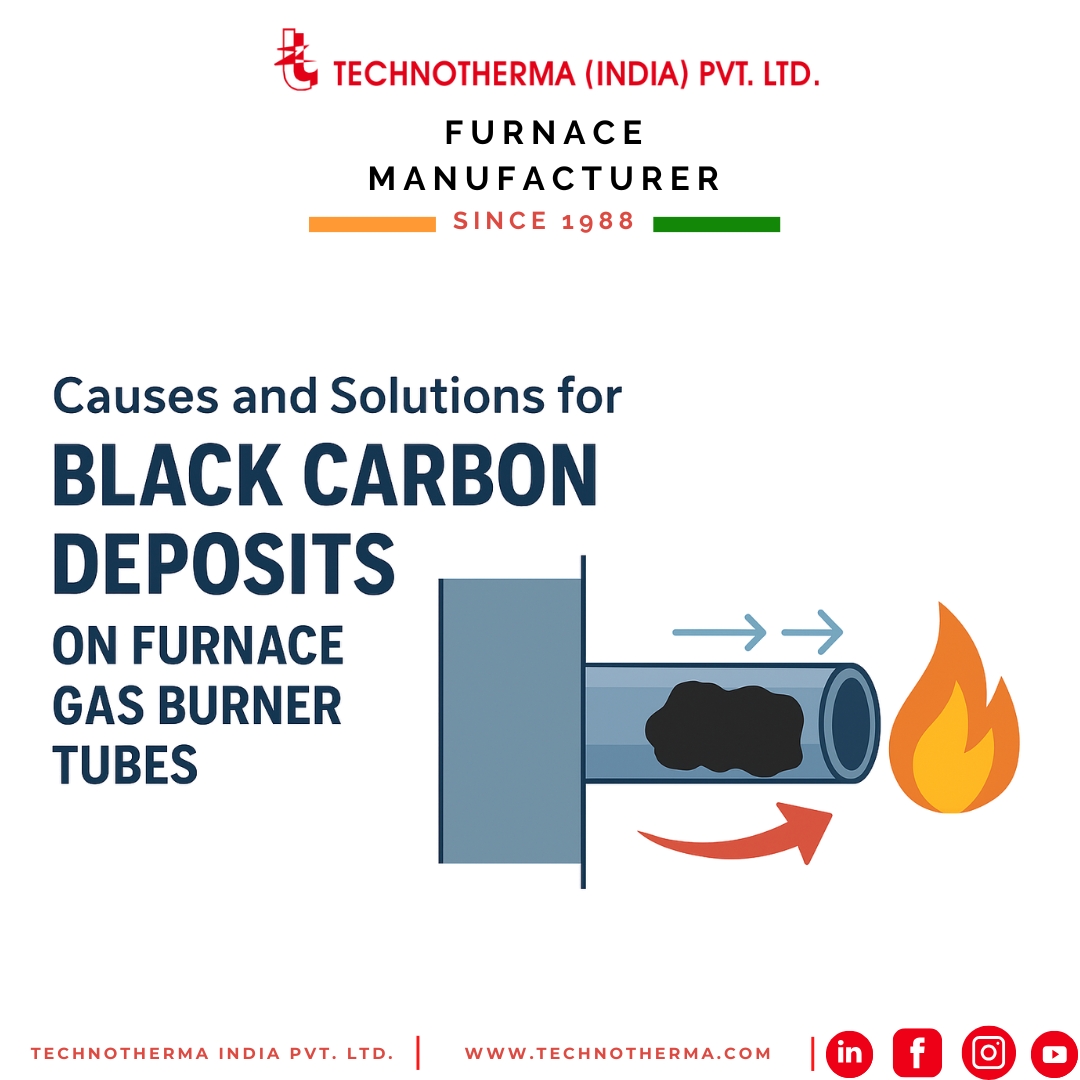Causes and Solutions for Black Carbon Deposits on Furnace Gas Burner Tubes

Causes and Solutions for Black Carbon Deposits on Furnace Gas Burner Tubes
Main Takeaway:
Black carbon buildup on the front of furnace gas burner tubes is a clear sign of incomplete combustion or improper burner operation. This carbon layer restricts proper firing and must be cleaned for stable burner performance. However, repeated buildup indicates deeper combustion or design issues that should be addressed systematically.
Understanding the Problem
Industrial furnaces rely on precise combustion control for consistent performance. When black soot or carbon deposits start appearing on the burner tubes or tips, it means that the air-fuel ratio is out of balance. These deposits interfere with flame stability, affect heat transfer, and may even lead to burner misfiring or flame failure.
Common Causes of Black Carbon Deposits
1. Incomplete Combustion
When the burner doesn’t receive enough air or has an excessive fuel supply, the gas cannot fully combust. This results in unburnt hydrocarbons forming carbon soot.
Typical reasons include:
-
Insufficient Air Supply: Clogged or restricted air inlets, blocked secondary air ports, or improper air-fuel adjustment.
-
Excess Fuel Supply: Gas pressure too high for the available air volume, leading to a fuel-rich mixture.
-
Poor Air-Gas Mixing: Dirty gas injectors or misaligned mixing nozzles prevent proper blending.
2. Burner Design or Maintenance Issues
-
Blocked Burner Orifices: Dust, corrosion, or old residue can partially block gas ports.
-
Misalignment of Components: Poor assembly or damaged flame retention structures lead to uneven flames.
-
Pressure Control Problems: Unstable gas pressure or faulty regulators can disrupt steady combustion.
3. Fuel Quality Concerns
-
Contaminated Gas: Presence of oil, tar, or heavier hydrocarbons in the fuel line encourages soot formation.
-
Switching Fuel Types: Using LPG or mixed gases without recalibrating the burner setup often causes carbon buildup.
Why Carbon Buildup Disrupts Burner Firing
The carbon layer on burner tubes acts like an insulating and physical barrier. It blocks ignition, prevents accurate flame sensing, and chokes the air passages.
In severe cases, it causes flame rollout or erratic firing patterns, forcing the system to shut down until cleaned.
Solutions and Preventive Measures
1. Regular Burner Maintenance
-
Schedule routine cleaning of burner tips, tubes, and orifices.
-
Check all air passages, gas lines, and mixing chambers for dirt or blockage.
2. Correct Air-Fuel Ratio Adjustment
-
Calibrate primary and secondary air supply based on burner design.
-
Adjust gas pressure regulators for a balanced mixture that ensures complete combustion.
3. Fuel Supply Management
-
Ensure consistent gas purity as per burner specifications.
-
Inspect and clean filters or pipelines periodically to prevent contamination.
4. Design Optimization
-
Use burners engineered for efficient air-gas mixing and low soot generation.
-
Replace worn or misaligned components to maintain proper flame shape and distribution.
5. Automation and Monitoring
-
Integrate flame detectors, oxygen sensors, or pressure switches for real-time monitoring.
-
Use flue gas analyzers to fine-tune combustion and detect inefficiencies early.
Industrial Insight from Technotherma
At Technotherma India Pvt. Ltd., we design and manufacture advanced furnace systems with optimized air-fuel control and combustion efficiency. Our engineering focus ensures minimal soot formation, stable firing, and long equipment life.
Regular cleaning might fix the short-term issue, but the real solution lies in analyzing combustion performance, calibrating the burner setup, and ensuring fuel quality. By maintaining the right balance, you can significantly reduce downtimes and improve thermal efficiency in your industrial furnaces.


